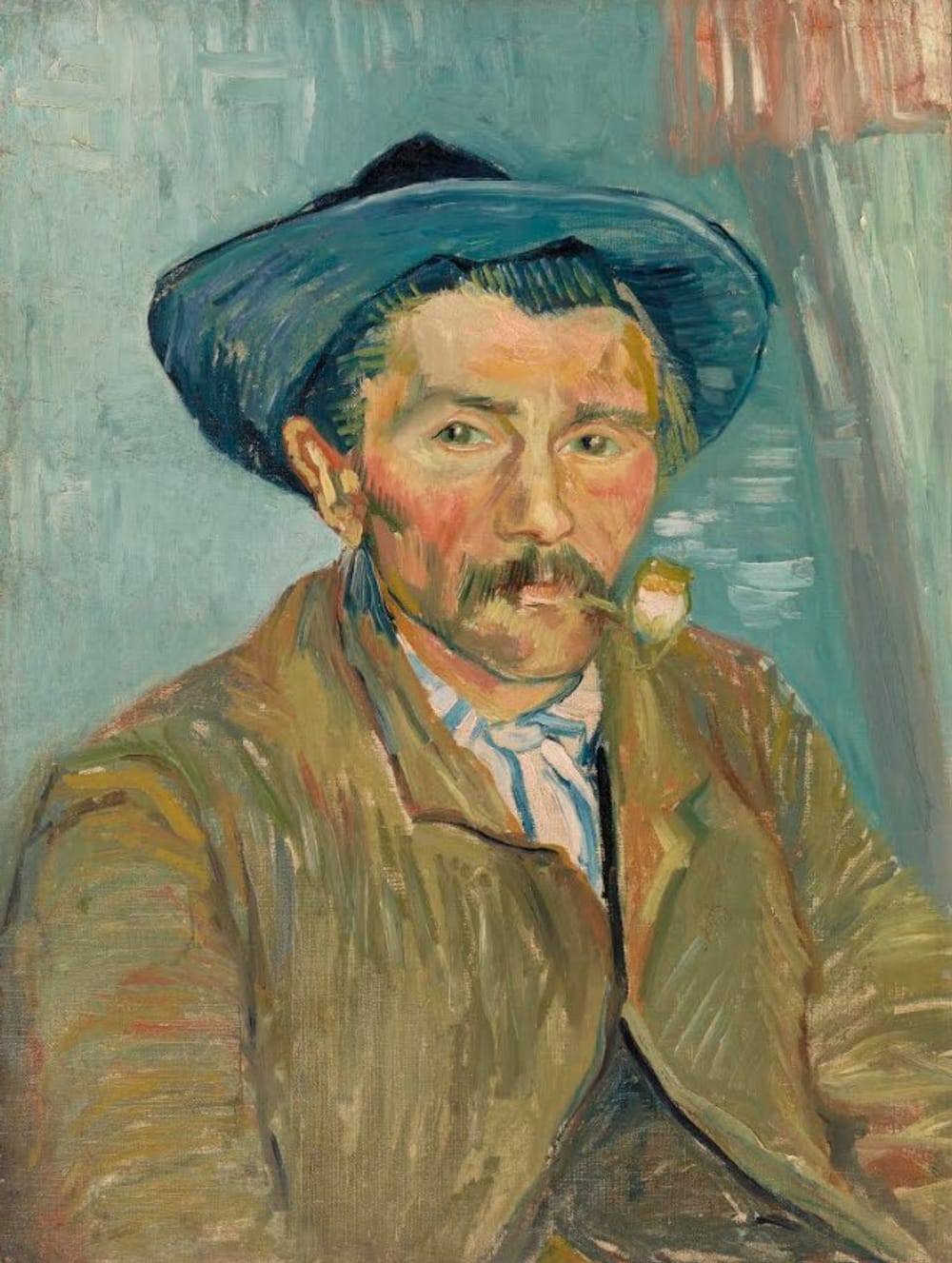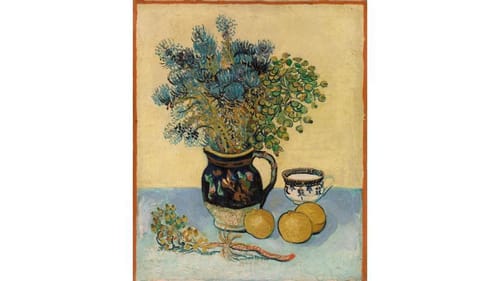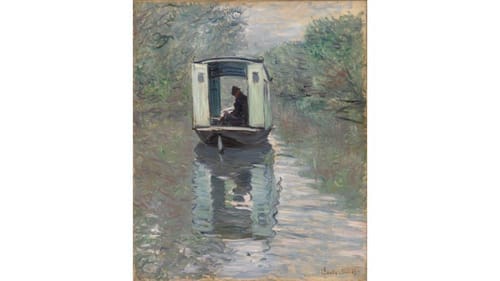Stay in the Loop
BSR publishes on a weekly schedule, with an email newsletter every Wednesday and Thursday morning. There’s no paywall, and subscribing is always free.
Putting French artists in their place
The Barnes Foundation presents From Paris to Provence: French Painting at the Barnes

Much of the world’s best-known, most-loved art was cultivated in a 470-mile corridor of central and southern France. The Barnes Foundation considers how this swath inspired Paul Cézanne, Pierre-Auguste Renoir, Vincent van Gogh, and other 19th- and 20th-century painters in From Paris to Provence: French Painting at the Barnes.
From the Netherlands to France
The atmosphere artists found in Paris and Provence influenced what and how they painted. In Paris, it was the electricity produced by creatives congregating in one spot. In Provence, it was the environment, light, air, and nature. Van Gogh’s palette warmed and intensified as he moved from his native Netherlands to Paris, and then to Arles in Provence. Traveling south, his overcast browns and grays blossomed into sunny citruses and rich blues.
In Arles, van Gogh made portraits of people he encountered, many of them common workers like Joseph-Étienne Roulin, depicted in 1889’s The Postman (Joseph-Étienne Roulin), who became a friend, and a local farmer, depicted in 1888’s The Smoker (Le Fumeur), whose weathered face attests to years in the fields. Postman and Smoker are neighbors in the exhibit, hanging on a wall with van Gogh’s depictions of a hillside vibrating with life (Houses and Figure, 1890), and an 1888 tabletop scene in Still Life (Nature morte), woven in bright yellow and inky navy, unifying walls, pitcher, flowers, and juicy lemons.

To emphasize the Smoker’s humble station, van Gogh scratched the canvas to simulate rough fabric in the man’s coat, and put a tinge of sea green in the whites of his eyes. Instead of distracting, the unexpected color adds a knowing aura to the Smoker’s already penetrating gaze.
Old friends in new places
In concept, the exhibit signals the Barnes’s intention to expand consideration of historic and geographic context in its educational programming. Paris to Provence temporarily relocates 55 familiar works from the collection as several of the museum’s first-floor galleries are closed for refinishing.
At the exhibition opening, curator Cindy Kang relished the opportunity to reposition the exhibit’s 55 works, which usually hang in unchanging arrangements, noting that van Gogh’s Postman is usually off in a corner, but “now he’s with his friend, the Smoker.” Reunited, if only for the summer.
Altering works’ position changes both the dynamic among them and with visitors. Changing perception, the conversation provides an idea of what van Gogh, Cézanne, Renoir, and others experienced as they moved around France. They saw differently, so they painted differently.
Traversing geography and time, the exhibit begins in 1870s and 1880s Paris, migrates south to Provence toward the turn of the century, and returns to Paris in the early 20th century. By that time, Paris was no longer the sole European capital of art, but one of many hubs advancing movements such as Post-Impressionism, Expressionism, Cubism, and Surrealism. Works by Amedeo Modigliani, Chaim Soutine, Giorgio de Chirico, and Joan Miró hint at what was to come.
Artists celebrate the everyday
In Paris, viewers trace the rise of Impressionism through the brushes of Édouard Manet, who encouraged the movement, and Pierre-Auguste Renoir, who is considered a founding father. Manet’s 1875 Laundry (Le Linge) foreshadows the elevation of average people engaged in daily activities. A woman in a garden wrings a garment out over a wooden washtub. A sheet of silvery water splashes over her hands into the basin as a small child watches, grasping the tub’s edge. Manet’s painting is large enough to imagine standing with them.
The Barnes’s collection is rich in Renoirs, and among those on view is his 1875 Luncheon (Le Déjeuner), depicting a couple relaxing at a table. Her straw hat, hanging on an unoccupied chair, and his informal crewneck indicate that boating is somewhere on the itinerary. Renoir often explored intimate moments, leisure, and private activities. He painted women tending to needlework in Embroiderers (Les Brodeuses) or preparing to bathe in Before the Bath (Avant le bain). He made portraits of people connected to his patrons, many of them children, as in 1876’s Portrait of Jeanne Durand-Ruel (Portrait de Mlle. J.).

When artists needed relief from Parisian intensity, they retreated to quiet suburbs or France’s northern coast. Claude Monet outfitted a boat as a floating studio, enabling him to anchor in streams or to placidly drift as he worked and relaxed. In 1876’s The Studio Boat (Le Bateau-atelier), we see him in the vessel’s open-ended cabin, protected from sun and shower, surrounded by nature.
The perfection of Provence
Cézanne was born in Aix-en-Provence. Kang explained that, though he spent time in Paris, it was not until Cézanne returned to Aix (pronounced “X”) that his style matured, revealing the characteristic parallel brushstroke that lent texture and emotion to his canvases. Sections of the exhibition are devoted to work Cézanne completed in Provence, and at the Jas de Bouffan, the country house he inherited, which had a studio specially designed to capture the northern light.
The artist acknowledged the importance of home: “When I was in Aix, I thought I’d be better off somewhere else; now I’m here, I miss Aix. When you’re born there, it’s hopeless, nothing else is good enough.” This year, Aix returns the compliment, declaring 2025 the Year of Cézanne and celebrating with a major exhibition and events in key sites, including Cézanne’s home, studio, and Bibémus Quarry, which became his outdoor studio.
At Bibémus, he created works that anticipate the rise of cubism, including Bibémus Quarry (Carrière de Bibémus) (c. 1895). First mined by the Romans, ruddy ochre stone from the quarry appears throughout Aix, giving buildings a golden glow when struck by the sun, an effect Cézanne ably captures.
Artists in place
From Paris to Provence demonstrates the importance of place to artists and art. Whether they leave home, as Van Gogh did, or, like Cézanne, are born in exactly the right place, artists and the work they produce are intimately connected to their surroundings.
At top: 1888’s The Smoker (Le Fumeur), by Vincent van Gogh, on view at the Barnes. (Image courtesy of the Barnes Foundation.)
What, When, Where
From Paris to Provence: French Painting at the Barnes. Through August 31, 2025, at the Barnes Foundation, 2025 Benjamin Franklin Parkway, Philadelphia. (215) 278-7000 or barnesfoundation.org.
Accessibility
The Barnes Foundation’s entire facility is accessible to standard wheelchairs, and a limited number of wheelchairs are available on a first-come basis. Wheelchair-accessible restrooms are located on the lower level and in the garden restaurant. Accessible parking is available. Additional accessibility information is available on the Barnes website.
Sign up for our newsletter
All of the week's new articles, all in one place. Sign up for the free weekly BSR newsletters, and don't miss a conversation.
